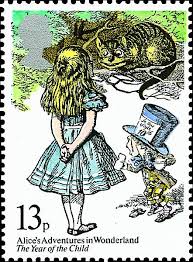A Philatelic Tour of Wales - North Wales, Caernarvon Castle and the Princes of Wales
- ronniesramblings
- Jul 29
- 3 min read
Updated: Aug 20
Beddgelert Forest Park, Snowdonia was chosen for the 20th International Geographical Congress set in 1964. Forestry plays an important part in the economy of North Wales and the Beddgelert Forest Park is typical of many acres of forestry lying in the heart of the Snowdonia National Park. The forest is run by the Forestry Commission which also caters for the many tourists and mountain walkers who come to the area with a campsite, forest trails and waymarked forest walks.

Sir Henry Morton Stanley was born John Rowland on 28th January, 1841 in Denbigh, he changed his name to Henry Morton Stanley on his adoption in America. In about 1859 he became a reporter for the New York Herald and travelled the world reporting on events. He is most famous for his daring expedition into Africa to find Dr. Livingstone. He later traced the source of the Congo and founded the Congo Free State under the Belgian King. He died in 1904.
Amongst famous visitors to Wales were Charles Darwin, who was born in Shrewsbury (in ancient times a part of Wales) who spent many days exploring the Welsh Countryside in his youth and was given a good grounding in geology in the mountains. Lewis Carol also visited the area and was said to be inspired by Alice Liddle and the town of Llandudno to write his famous Alice in Wonderland.
Caernarvon Castle and the Princes of Wales
Caernarvon Castle represented Wales on the £1 high value definitive stamps from 1955-1969. The castle is built on the site of an earlier fort and was built in the 1290’s at the order of Edward I. The castle has seen many sieges over the years, the wall below the Eagle Tower being breached in 1294 but held out against Owain Glyndwr in 1403. During the Civil War the castle changed hands three times, finally succumbing to the Parliamentary forces.
The museum of Welch Fusiliers is housed in the Queen’s Tower. The Welch Fusiliers have a history of service covering nearly three centuries being formed in 1689 an they first served in Northern Ireland in 1690.

The first Prince of Wales (later Edward II) is said to have been born in the Eagle Tower (although historians are doubtful about this) in 1284. Legend also has it that when the new son was three days old, a number of Welsh chieftains came to Caernarvon to ask Edward I to find them a prince who could speak neither English nor French, so that there could be peace in Wales. Edward I left the chieftains to return minutes later with his new infant son. “Here is the Prince you look for, the new Prince of Wales, he has been born in your native country. His character is impeccable. He cannot speak a word of English nor French, if it pleases you the first words he utters shall be Welsh”. The chieftains realising they had been caught in a skilful trap, knelt in turn and kissed the hand of the infant, swearing loyally to him. Prince Edward had a Welsh nurse, one Mary of Caernarvon and he was taught Welsh. He was invested as Prince of Wales in 1301.
Traditionally the eldest son of the Monarch is given the title Prince of Wales, although Edward of Caernarvon was Edward I’s second son, Prince Alfonso being the eldest but died some four months after Edwards birth.
There have been twenty one Princes of Wales but only three have been invested at Caernarvon, George V, Edward and Prince Charles. Prior to Edward of Windsor’s investiture in 1911 there had been no ceremony since 1616, the issuing of the Patent of Creation the only legal requirement, the revival of the traditional ceremony was enthusiastically received and the investiture at Caernarvon a triumph. Both Princes were able to speak Welsh, Edward made two speeches at his investiture both of which included sentences in Welsh and Prince Charles speaks fluent Welsh.

The Black Prince was the son of Edward III and as such was declared Prince of Wales in 1343. He is famous for his Plume of Feathers, now generally adopted by succeeding Princes of Wales. Legend has it that the Black Prince took the badge from the blind King of Bohemia, who was killed at the Battle of Crecy in 1346, however, there is no evidence to support this and it was not until the early Tudors that the three feathers became a plume with the motto Ich Dien, however, ostrich feathers have been associated with the Prince of Wales since the Black Prince.









Comments